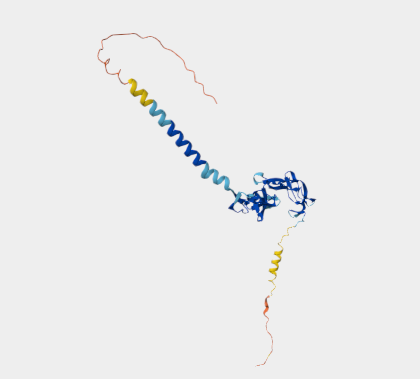Key features and details | |
Cat. No. | MABL-1913 |
Name | Anti-HVEM mAbs |
Clone No. | AFD- HMHV-1B18 |
From | Recombinant Antibody |
Isotype | Engineer antibody |
Application | Blocking, functional assays, IP, WB, FC |
Species Reactivity | Mouse |
Basic Information | |
Specificity | This antibody is specific for Herpes Virus Entry Mediator (HVEM, TR2), a type I transmembrane protein of TNF-receptor superfamily. This receptor, which is expressed on most cell types, including T cells, B cells, monocytes, neutrophils, and dendritic cells. Binding of HSV viral envelope glycoprotein D (gD) to this receptor protein has been shown to be part of the viral entry mechanism. The cytoplasmic region of HVEM was found to bind to several TRAF family members, which may mediate the signal transduction pathways that activate the immune response. HVEM has also been demonstrated to be a unique ligand for BTLA (B and T lymphocyte attenuator). |
Alternative Name | CD270; TNF Receptor-like 2; ATAR; Herpes virus Entry Mediator A; HVEA; Herpes virus Entry Mediator; LIGHTR; Tumor Necrosis Factor Receptor-Like Gene2; Tumor Necrosis Factor Receptor-Like 2; TR2; Tumor Necrosis Factor Receptor Superfamily Member 14; TNFRSF14; CD40-Like Protein |
UniProt | Q71F55 |
Immunogen | This antibody was raised by immunising Armenian hamsters with mouse HVEM:Fc fusion protein. |
Application Notes | This antibody has been used in FACS to demonstrate that lymphatic endothelial cells mediate deletion only via programmed cell death-1 (PD-1) ligand 1 (Tewalt et al 2012) and in Western Blot to study the role of LIGHT in the pathogenesis of hepatitis (Anand et al 2006). This antibody has been also been used in vivo experiments to study the mechanisms by which TNFSF14 functions to promote airway remodelling in asthma (Sibilano et al 2016), to confirm that costimulatory role through HVEM is not necessary for LIGHT-mediated liver inflammation (Anand et at 2006), and to investigate the role that herpesvirus entry mediator plays in the development of experimental conjunctivitis (Ishida et al, 2012). |
Antibody First Published | Waka Ishida et al. B and T lymphocyte attenuator regulates the development of antigen-induced experimental conjunctivitis. Graefes Arch Clin Exp Ophthalmol. 2012 Feb;250(2):289-95. PMID:21779950 |
Note on publication | Describe the use of this antibody, together with the anti-BTLA antibody, to investigate the roles that B and T lymphocyte attenuator (BTLA) and herpesvirus entry mediator (HVEM) play in the development of antigen-induced experimental conjunctivitis (EC). |
COA Information (For reference only, actual COA shall prevail) | |
Size | 100 μg Purified antibody. |
Concentration | 1 mg/ml. |
Purification | Protein A affinity purified |
Buffer | PBS with 0.02% Proclin 300. |
Concentration | 1 mg/ml. |
Storage Recommendation | Store at 4⁰C for up to 3 months. For longer storage, aliquot and store at - 20⁰C. |



